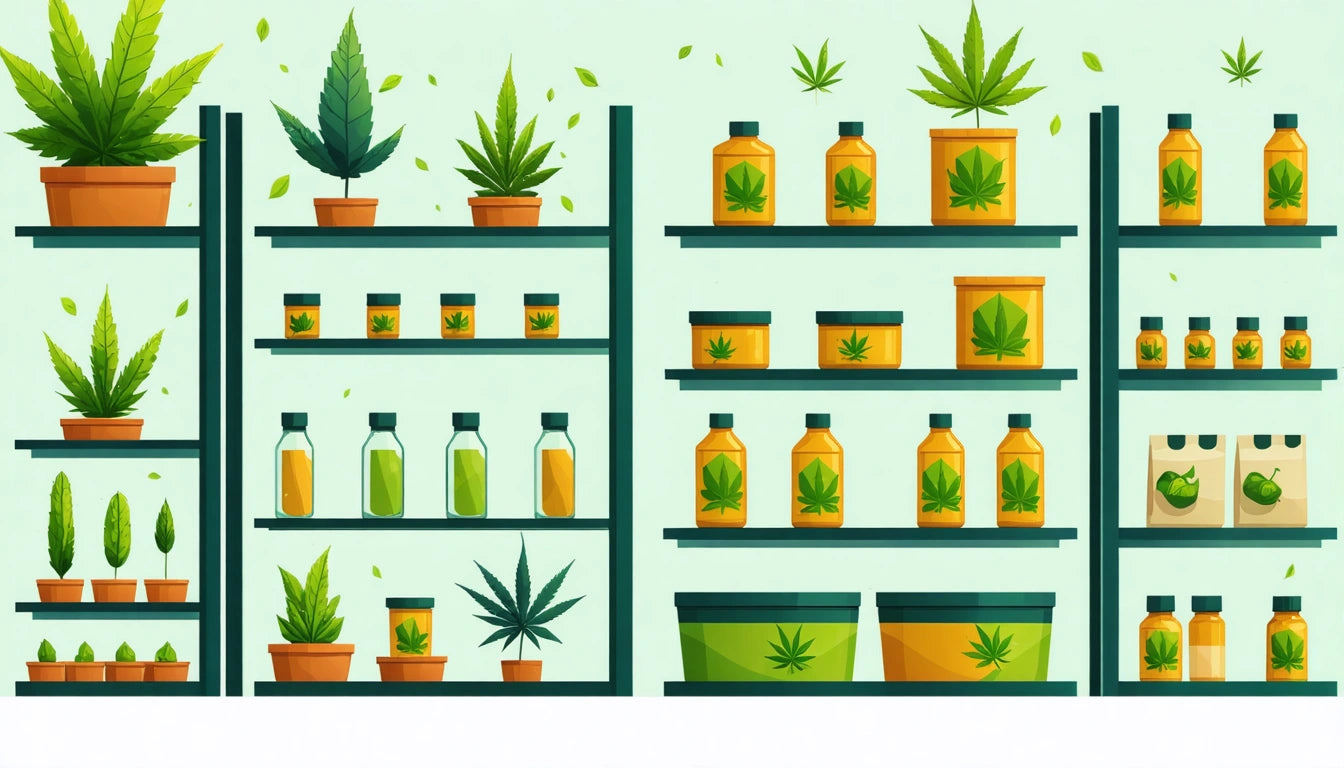Table of Contents
Cannabis concentrates represent a significant investment for consumers and businesses alike. Their potency, flavor profiles, and therapeutic benefits can degrade rapidly without proper storage techniques. Understanding how to maintain the integrity of these products extends their shelf life and preserves the experience consumers expect.
Understanding Concentrate Degradation
Cannabis concentrates begin to degrade immediately after production. Three primary factors accelerate this process: oxygen exposure, light penetration, and temperature fluctuations. When concentrates are exposed to these elements, cannabinoids like THC convert to CBN, resulting in diminished potency and altered effects. Additionally, the volatile terpenes responsible for flavor and aroma evaporate quickly under suboptimal conditions.
Different concentrate types degrade at varying rates. As outlined in this comparison of solvent and solventless concentrates, products like live rosin may require more careful handling than their solvent-based counterparts due to their delicate terpene profiles.
Optimal Storage Containers
Glass Containers
Borosilicate glass containers represent the gold standard for concentrate storage. Unlike plastic, glass doesn't leach chemicals or react with terpenes. For optimal preservation, amber or opaque glass containers block harmful light while maintaining an airtight seal. Many concentrate producers have moved toward glass packaging for premium products.
Silicone Containers
While convenient for short-term storage of stable concentrates like shatter or wax, silicone has limitations. Research indicates that terpenes can sometimes cause silicone degradation, potentially contaminating the product. For products like budder, crumble, and other terpene-rich varieties, glass remains superior.
Specialized Packaging
For retail operations and bulk storage, specialized mylar bags with appropriate barrier properties can maintain freshness. For instance, high-quality mylar storage bags designed for cannabis products provide excellent protection against light, moisture, and oxygen when properly sealed.
Temperature and Light Considerations
Temperature control plays a crucial role in preserving concentrate integrity. The ideal storage temperature range falls between 50-70 °F (10-21 °C). Refrigeration can extend shelf life significantly, especially for solventless extracts that haven't undergone winterization.
When refrigerating concentrates:
- Allow products to reach room temperature before opening to prevent condensation
- Use vacuum-sealed containers when possible to minimize air exposure
- Keep concentrates in the main compartment rather than the door to avoid temperature fluctuations
UV light accelerates cannabinoid degradation through a process called photodegradation. Even brief exposure to direct sunlight can significantly impact potency and terpene profiles. Always store concentrates in opaque containers or dark environments.
Humidity Control for Different Concentrate Types
Different concentrate consistencies require specific humidity considerations. Products like shatter and pull-and-snap benefit from drier environments, while budders and live resins may require slightly higher humidity to maintain their consistency.
For optimal preservation:
- Shatter/Wax: 40-50% relative humidity
- Budder/Badder: 55-62% relative humidity
- Live Resin/Rosin: 58-62% relative humidity
Humidity control packs designed specifically for cannabis can help maintain these ideal conditions, particularly for high-THC concentrates where preserving potency is especially important.
Long-Term Storage Strategies
For extended preservation beyond a few weeks, consider these advanced techniques:
Vacuum sealing removes oxygen that would otherwise degrade cannabinoids and terpenes. When combined with refrigeration, this method can extend shelf life by months. For the most sensitive products, some enthusiasts use deep freezing (below -10 °F/-23 °C) for long-term archiving, though this requires careful handling to prevent moisture contamination.
When storing concentrates long-term, proper labeling becomes essential. Include the production date, strain information, and potency details as outlined in this guide to reading concentrate labels. This practice helps track product age and anticipate potential changes in consistency or effects.
For businesses maintaining inventory, implementing a first-in-first-out (FIFO) system ensures older products move before newer ones, minimizing waste and maintaining consistent quality for customers.
By implementing these storage practices, both consumers and businesses can significantly extend the shelf life of concentrates while preserving the flavor profiles, potency, and overall experience that make these products valuable. Whether storing personal collections or managing retail inventory, proper storage represents one of the most important yet often overlooked aspects of concentrate handling.











Leave a comment
All comments are moderated before being published.
This site is protected by hCaptcha and the hCaptcha Privacy Policy and Terms of Service apply.